Best Silk Saree Buyers to Sell Any Pure Zari Sarees
Kanchipuram Silk Saree
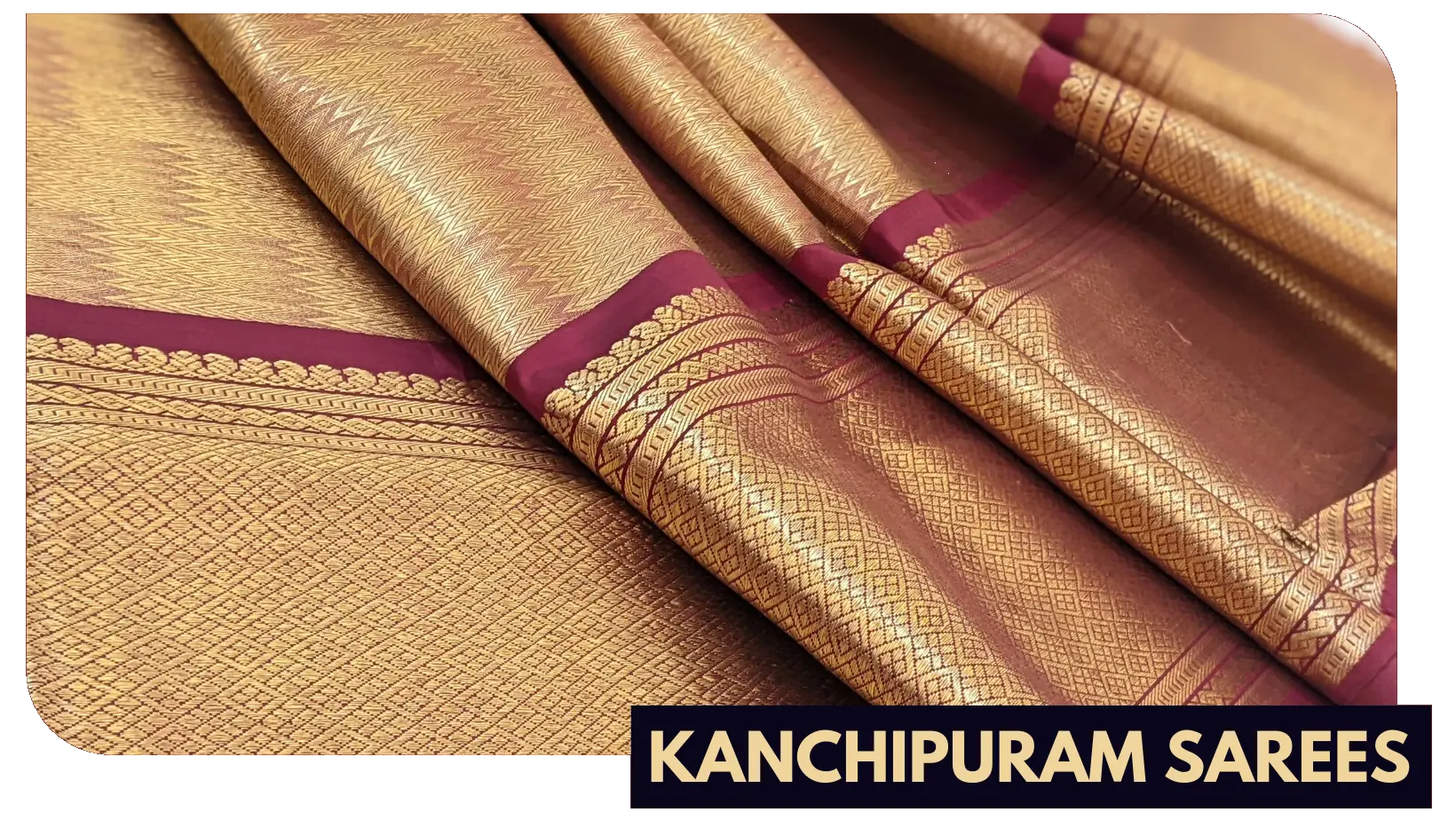
Do you have old or used Kanchipuram Pattu silk sarees you no longer wear? Instead of letting these beautiful sarees sit unused in your wardrobe, why not sell your used Zari sarees online and earn some extra money? At OLDZARI, we focus on buying pre-owned Kanchipuram silk sarees from across India.
Mysore Silk Saree
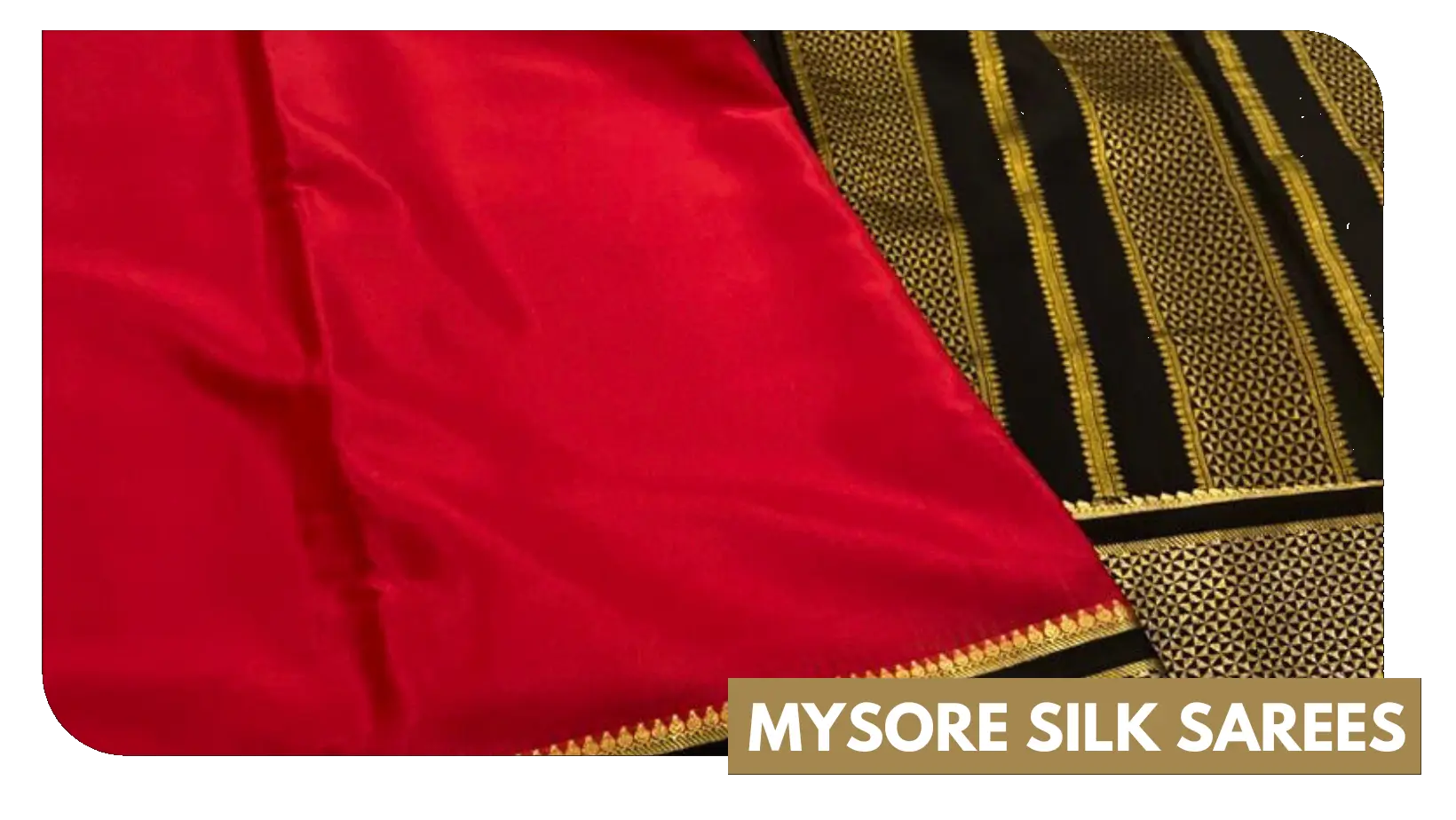
Welcome to OLDZARI, your trusted online buyer of pre-used Mysore Silk Sarees. Based in Chennai, Coimbatore, Madurai, Bangalore, and other areas, we specialize in providing the best prices for your old Mysore Silk Sarees.
Banarasi Saree
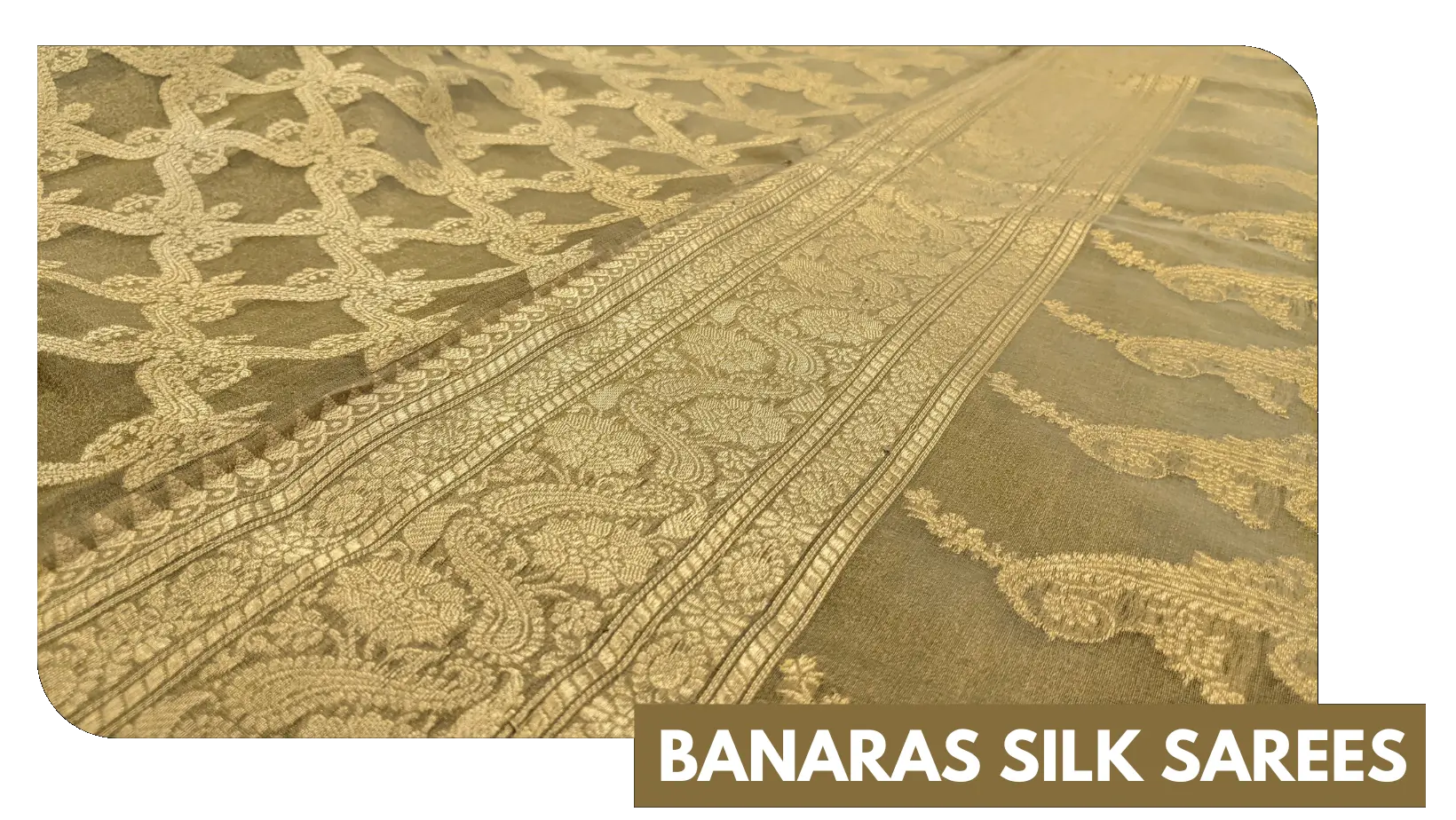
Looking to sell your old Banarasi Sarees for cash? At OLDZARI, we offer a convenient and secure way to turn your old sarees into instant cash. Banarasi Sarees are celebrated for their elaborate designs and luxurious silk fabric, originating from Varanasi.
Kasavu Saree
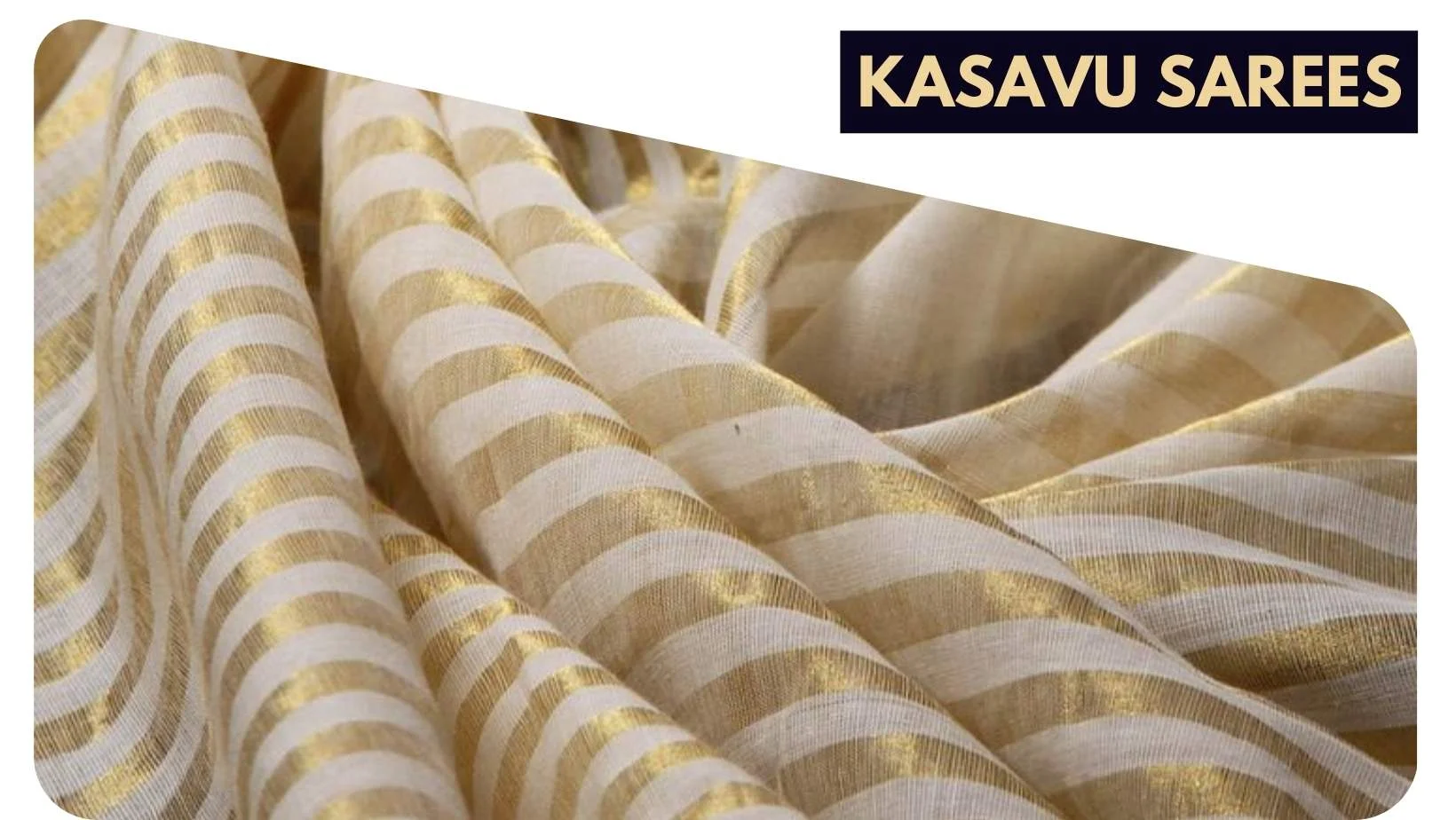
Kasavu sarees from Kerala have a traditional, ageless elegance with visual restraint. This high-class traditional garment is known for its incredible embroidery, rich colour, and surface embellishments, while its simple yet elegant appearance flaunts its unique aesthetic and cultural literacy.
Bandhani Saree
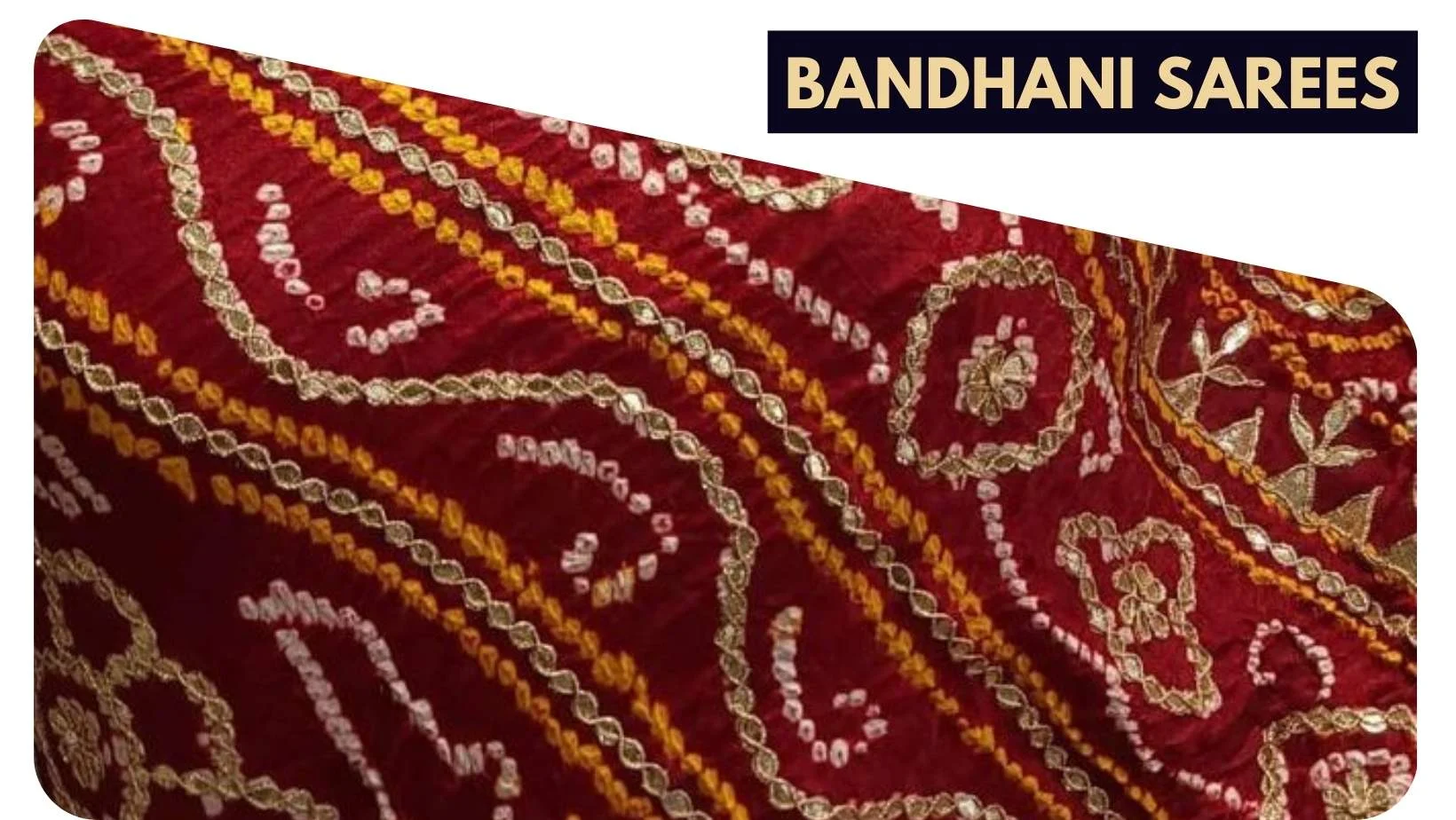
Bandhani sarees, with their long and rich history dating back to the 6th century BC, are popular for the tie and dye technique. This unique technique was brought to India by the Persians, while later on, the famous Rajputs of Rajasthan and Gujarat adopted it to create iconic bandhani sarees.
Paithani Saree
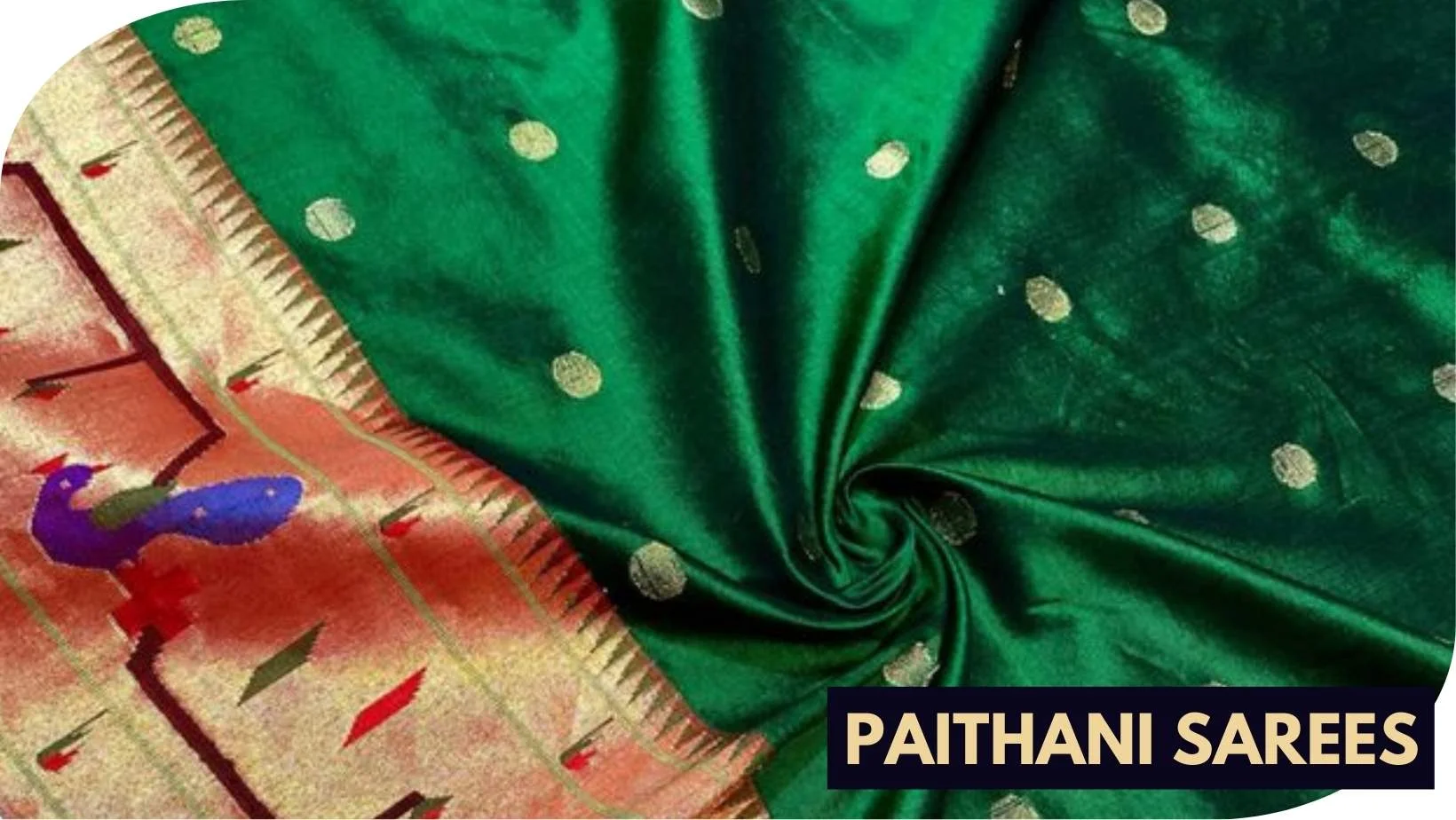
Maharashtrian wedding staple Paithani saree has shown India's love affair with handlooms for centuries. Its precious waves have been preserved and passed on to the next generation as a treasured heirloom. This iconic saree hails from the royal dynasties who used to live in the medieval town of Paithan in Aurangabad.
Chikankari Saree
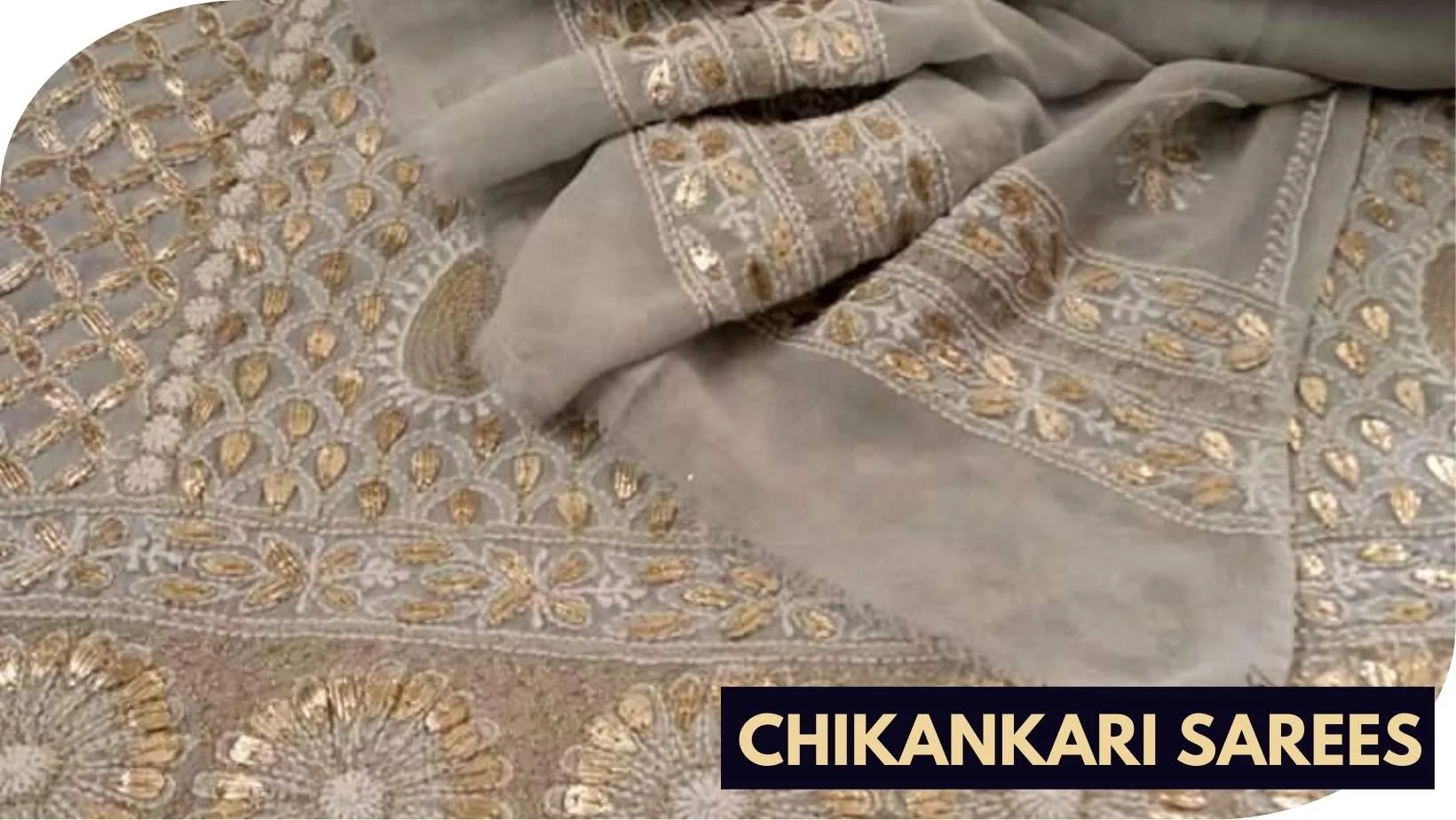
A whimsical Chikankari saree and its convoluted glory have become the first choice for starlets for their big day. Chikankari, rooted in the princely state of Lucknow, is a royal fabric that features the classic style. Popular culture often claims that Nur Jehan brought the iconic Chikankari to Lucknow, but records now trace this art back to the era of Chandragupta Maurya.
Leheriya Saree
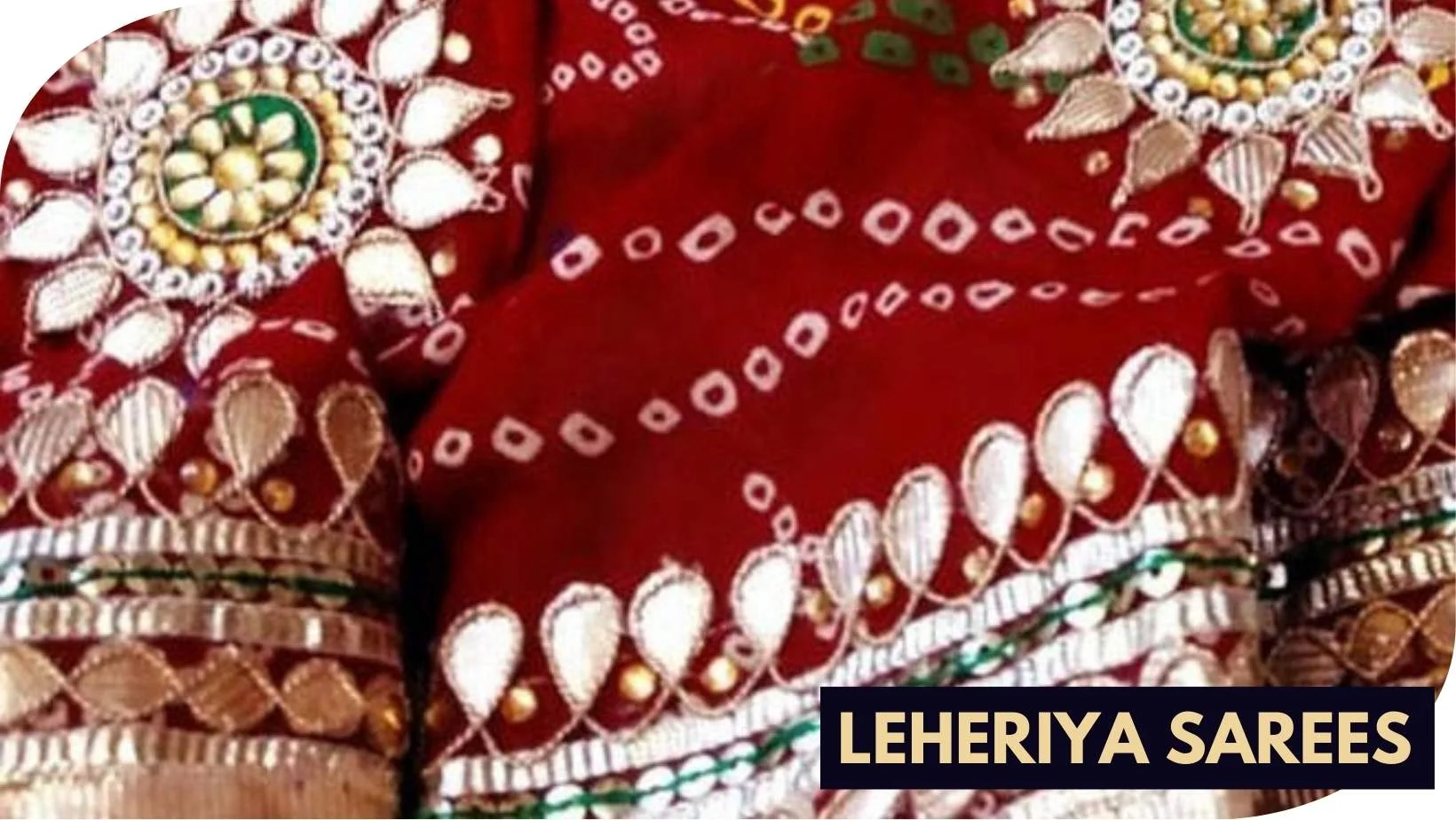
A saree enthusiast's collection is incomplete without different types of Leheriya sarees. Fashionistas adore Mothra, a kind of Leheriya saree with fabulous criss-cross-patterned stripes. It's a must-have. On the other hand, Samundra Leheriya, recognized for its broad stripes, is another iconic stunner.
Sambalpuri Saree
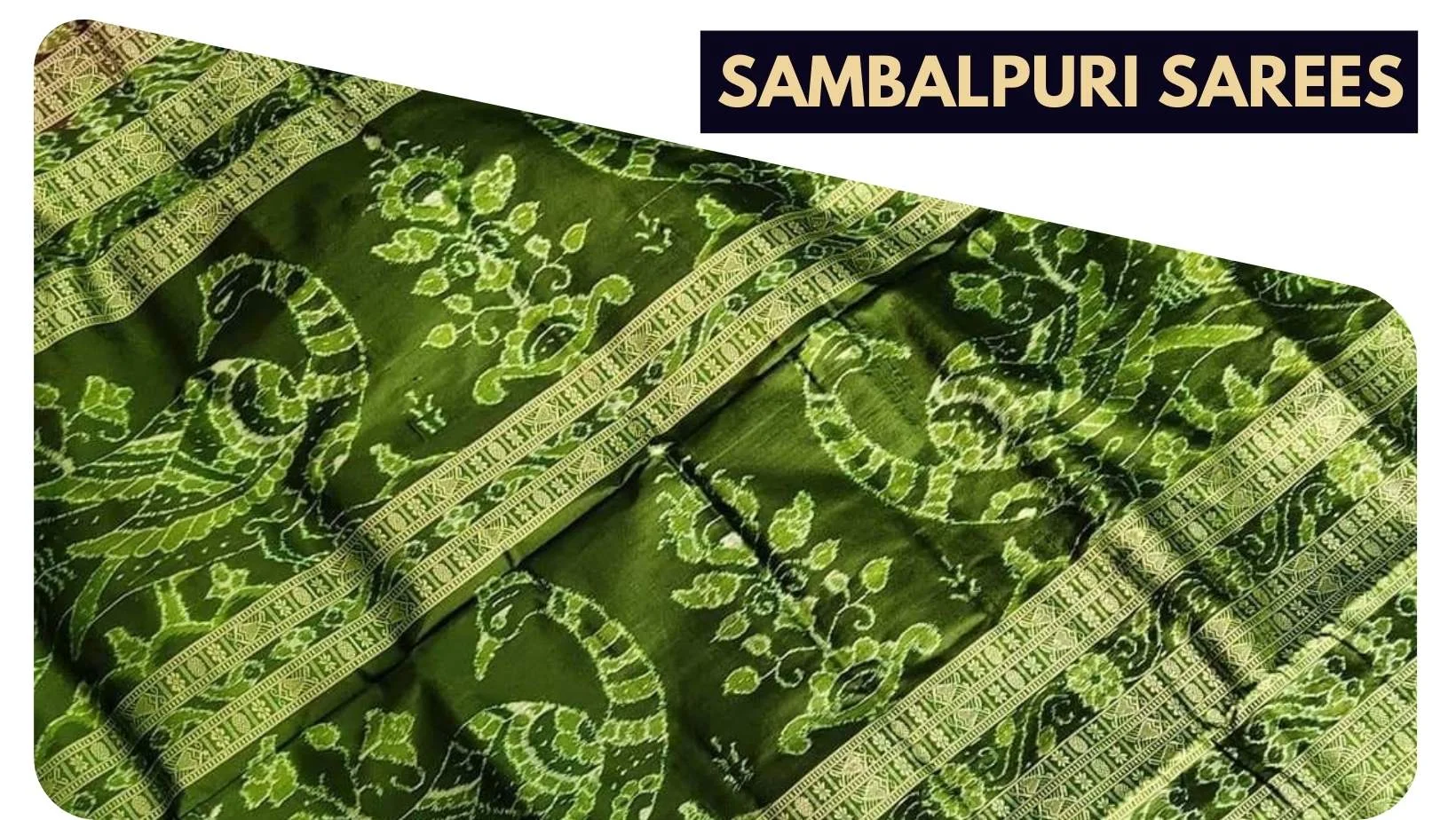
Sambalpuri Ikat or Sambalpuri silk sarees are made from 100% handwoven fabric. Iconic Ikat Sambalpuri handloom sarees are identified by an extra-ordinarily woven pallus and beautiful borders. Weavers of Bargarh, Balangir, Sambalpur, Sonepur, and Boudh Districts of Odisha are famous for producing these iconic masterpieces.
Organza Saree

Karnataka's stunning Organza, a sheer and thin plain weave fabric, has been cherished by all saree lovers for its gorgeous yet delicate look and durable nature. Like many silk fabrics, the silk Organza saree is originally from ancient China, the birthplace of silk production. The finest fabric eventually found its way across the globe.
Muga Silk Saree
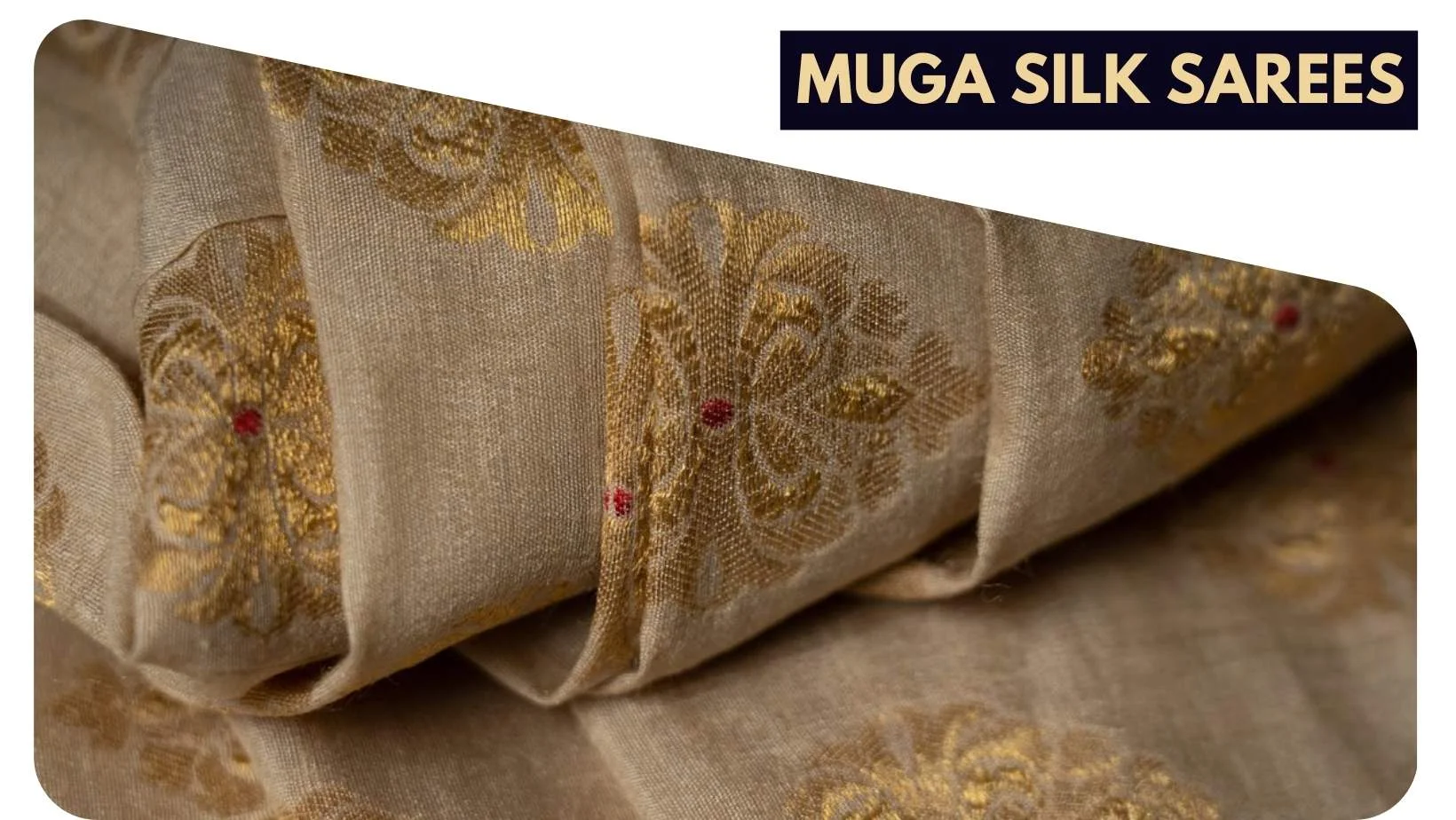
Muga silk sari is also known as the golden silk of Assam. These timeless pieces are among the most prized possessions in the Indian textile industry. These sarees have a rich history of over 1000 years. Produced by the Antheraea Assamensis silkworm, the name Muga came from the Assamese word Muga, which means yellowish.
Mangalagiri Saree
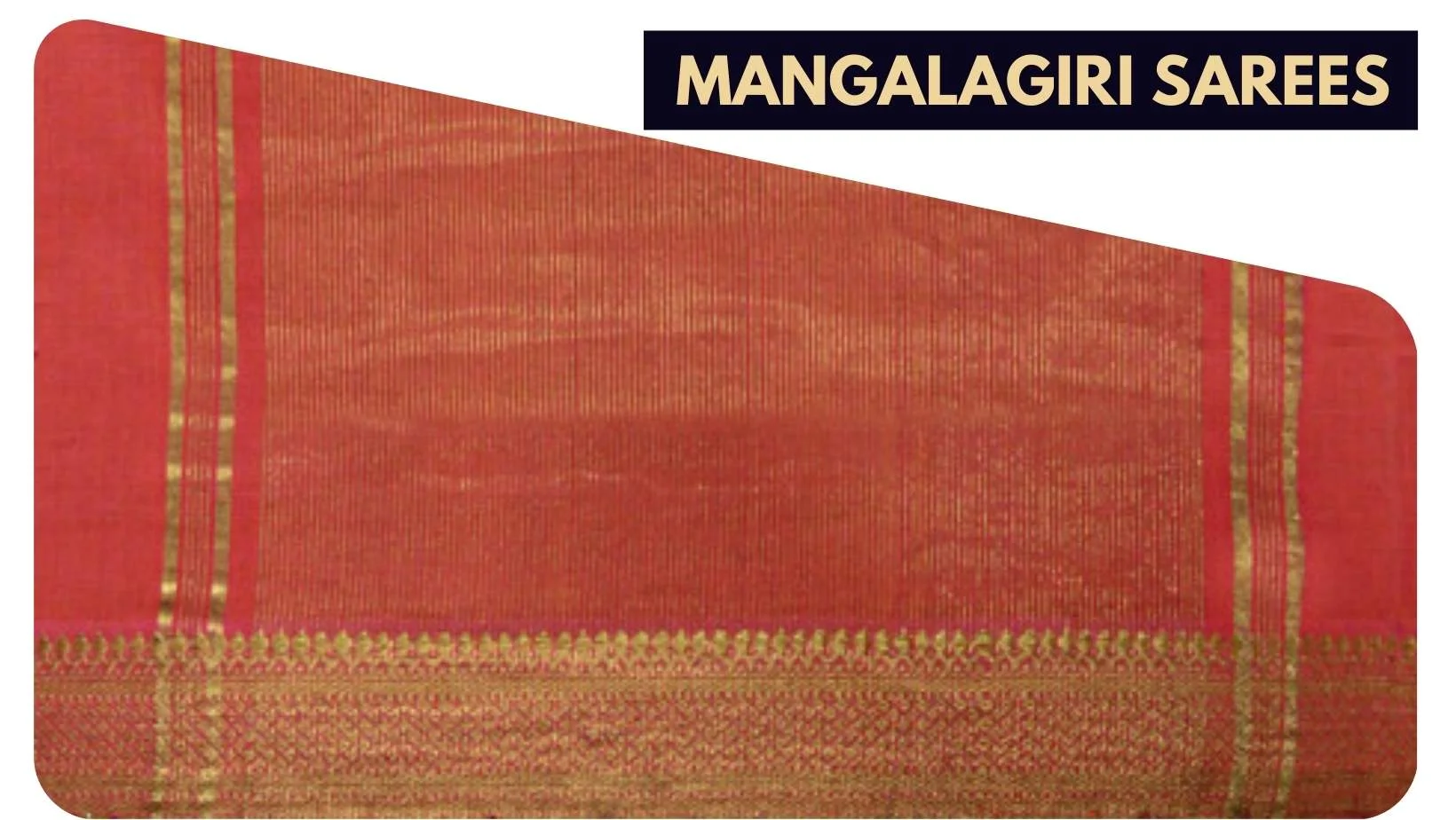
Mangalagiri means auspicious hill. During the rule of Vijayanagara, Mangala Nilayam was famous. Later on, the name changed to Totadri. With heavy gold threaded Zari borders, finest cotton silk, exclusive Nizam designs, and exceptional color combinations, these stunning sarees are known for their traditional finesse.
Tussar Saree
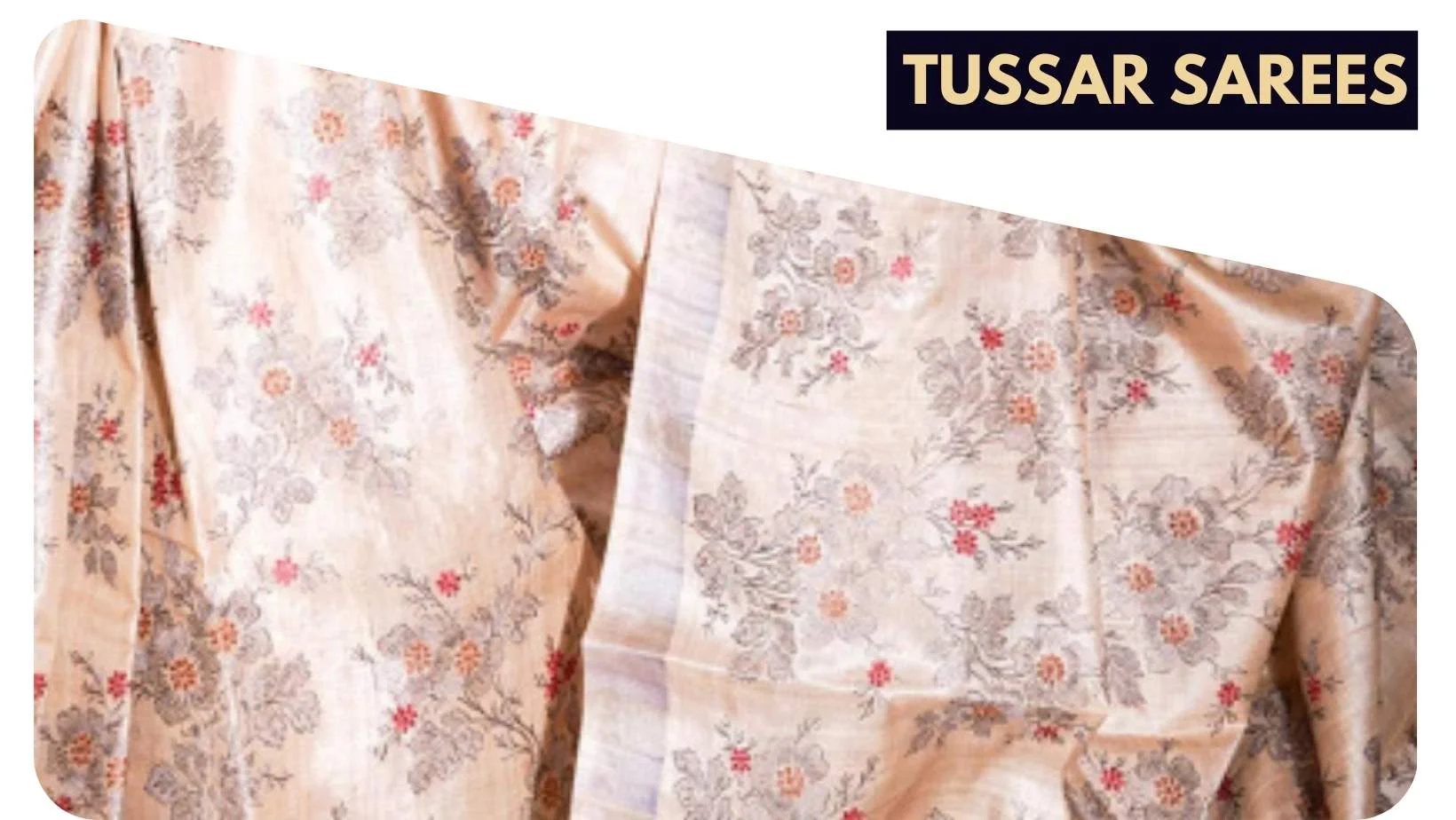
One of the finest silk is Tussar silk from West Bengal. These stunners are made of natural silk fibers with a golden undertone. The silk used in these iconic sarees is the reason behind their natural golden sheen and unique texture.
Tilla Saree

While embroidery is an integral part of Tilla sarees, the silver and gold thread that uses a fine needle has an incredible sheen and symbolizes class. With discreet Tilla embroidery, these classic sarees are inspired by tradition and help anyone instantly steal the spotlight on any occasion.
Nauvari Saree
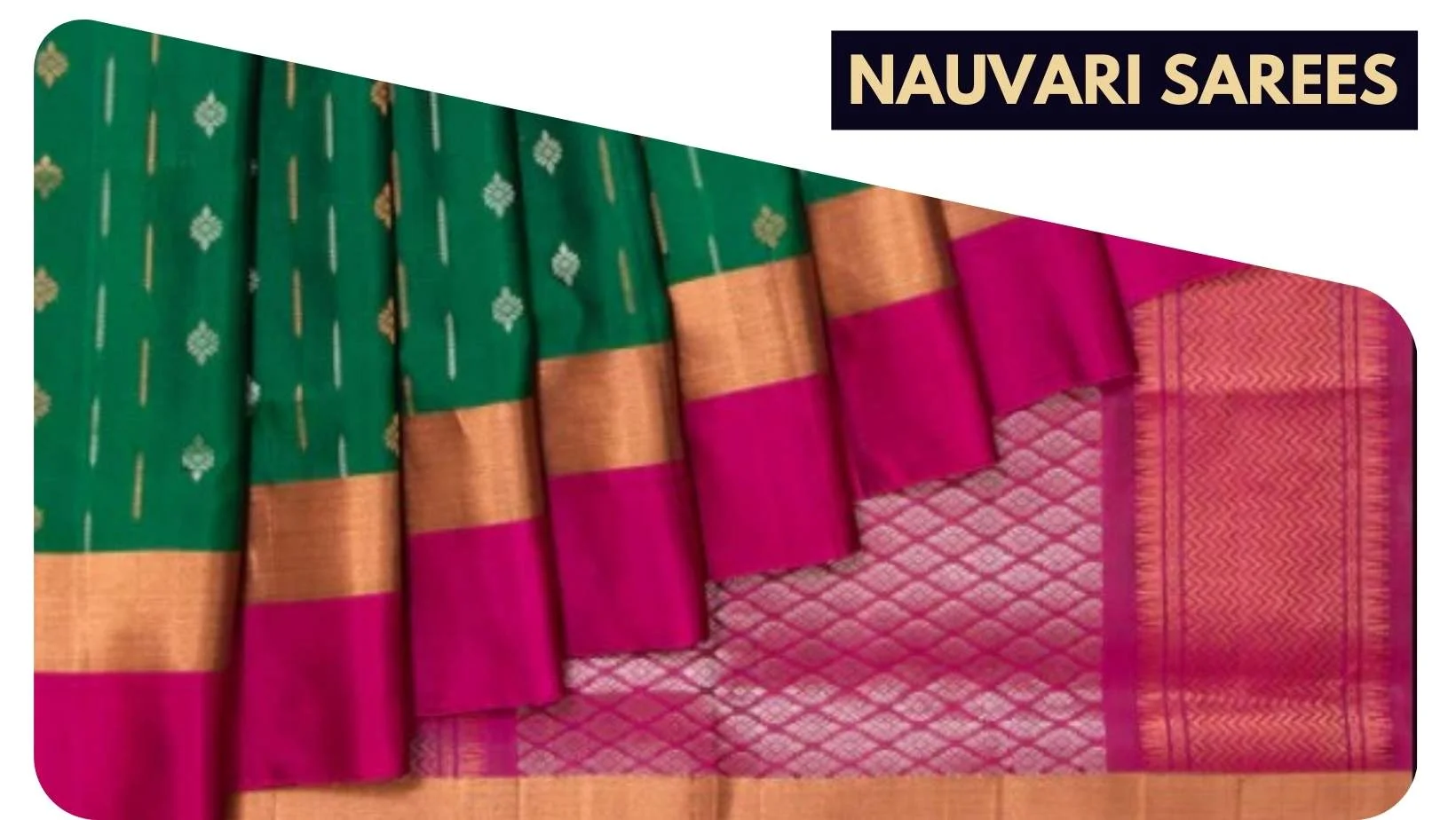
Nauvari saree from Maharashtra is famous for its unique draping style and holds rich cultural significance. Nauvari came from the Marathi word "Nau," which means nine, referring to this graceful saree's nine-yard length. This stunning silk fabric saree is unlike other ordinary sarees, as women didn't want to put on a petticoat underneath it.
Tant Saree
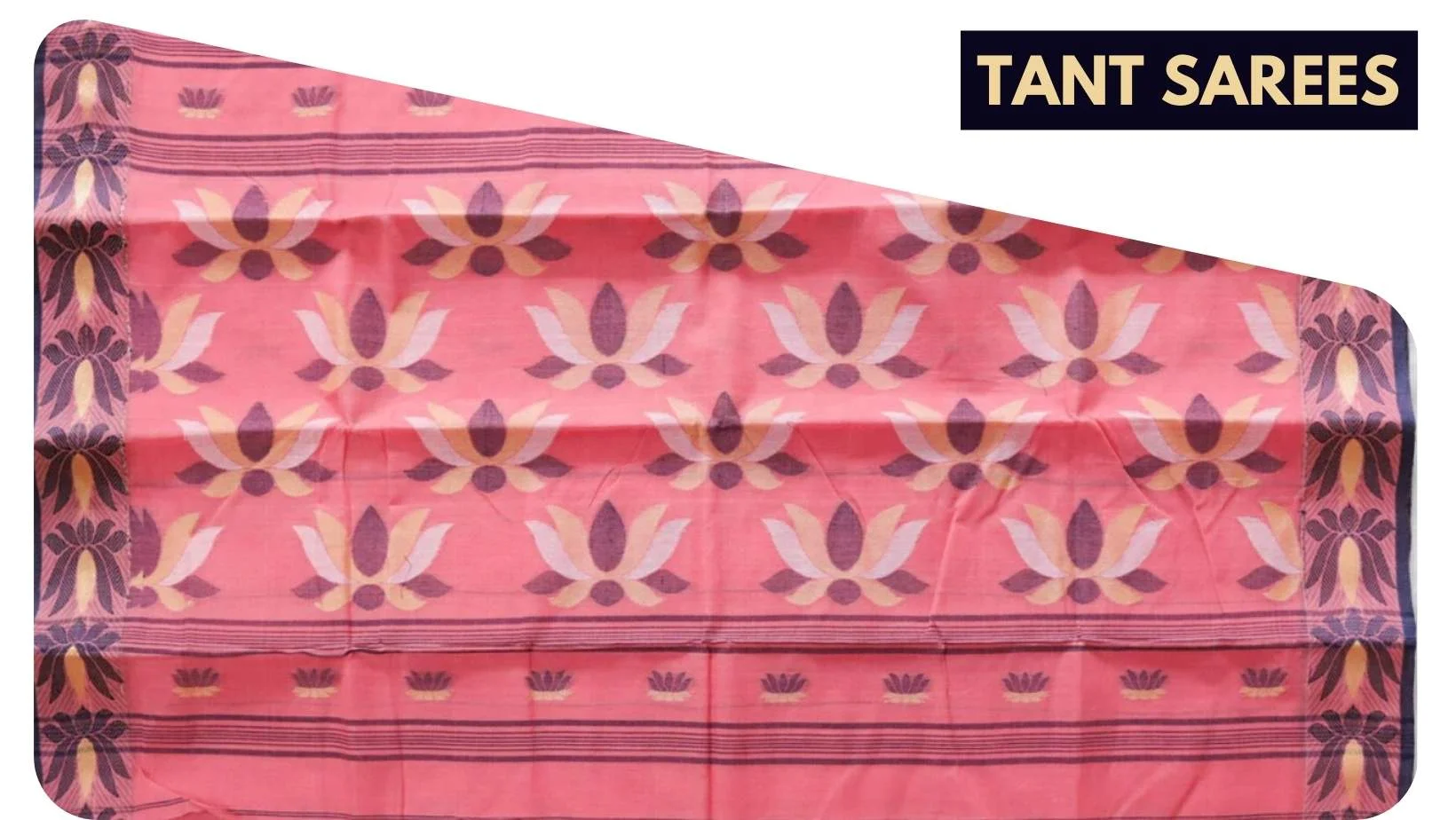
A country is as diverse as India is recognized as a fertile ground for indigenous crafts. The thriving cultural legacy of West Bengal is in the spotlight today because of the Tant saree. Every saree has a story, as these stunning wardrobe staples represent the most ancient weaving techniques that originated in the 15th century in Bengal due to Mughal patronage.
Tanchoi Saree
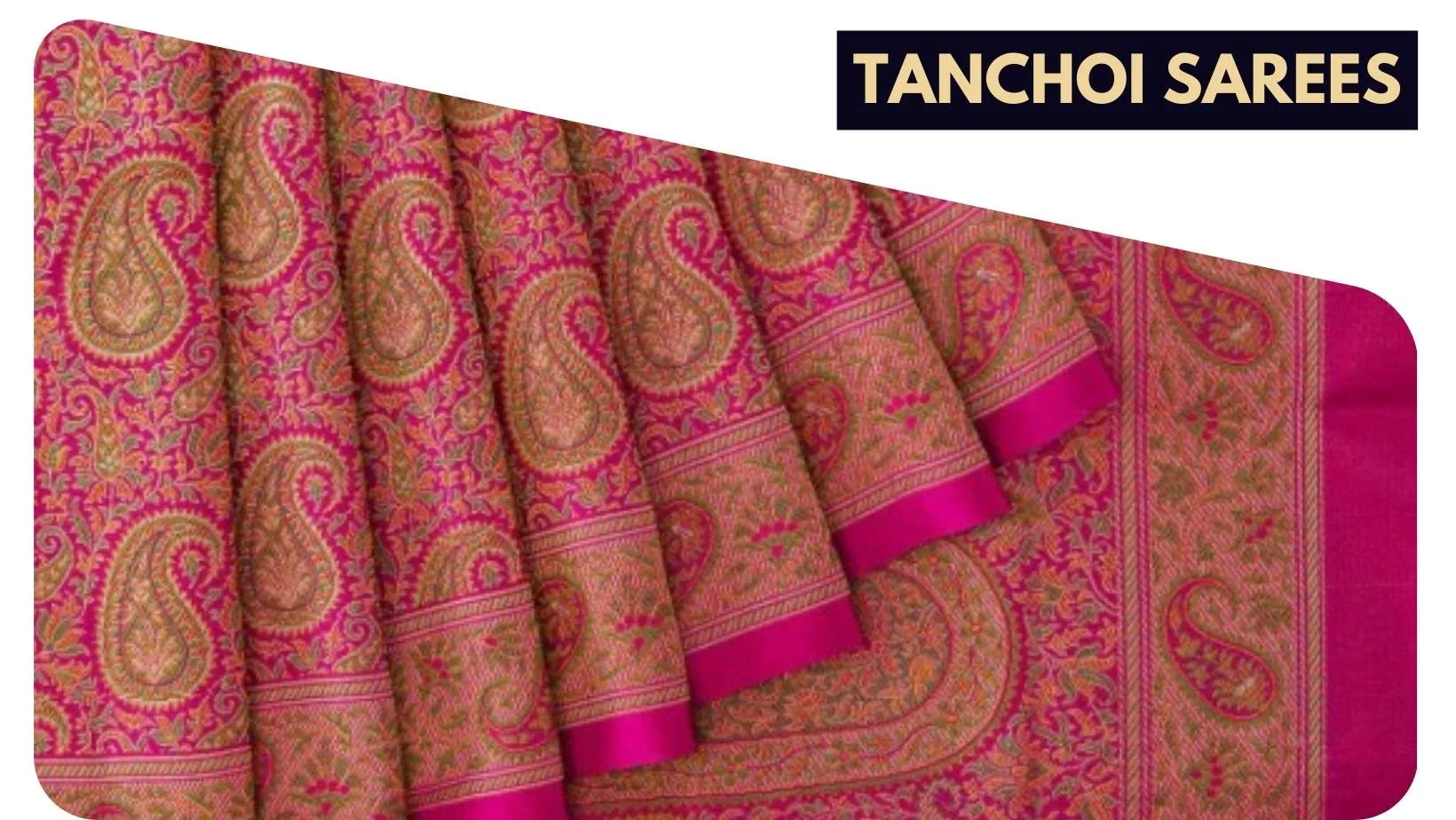
Every little girl, once in a while, often longingly looks at her mother's Banarasi saree collection, imagining owning one herself one day. Different types of Banarasi: Tanchoi is one of the most exquisite brocades that uses pure silk weft floats over silk wrap. This fantastic technique offers a 3D look to the textile.
Patola Saree
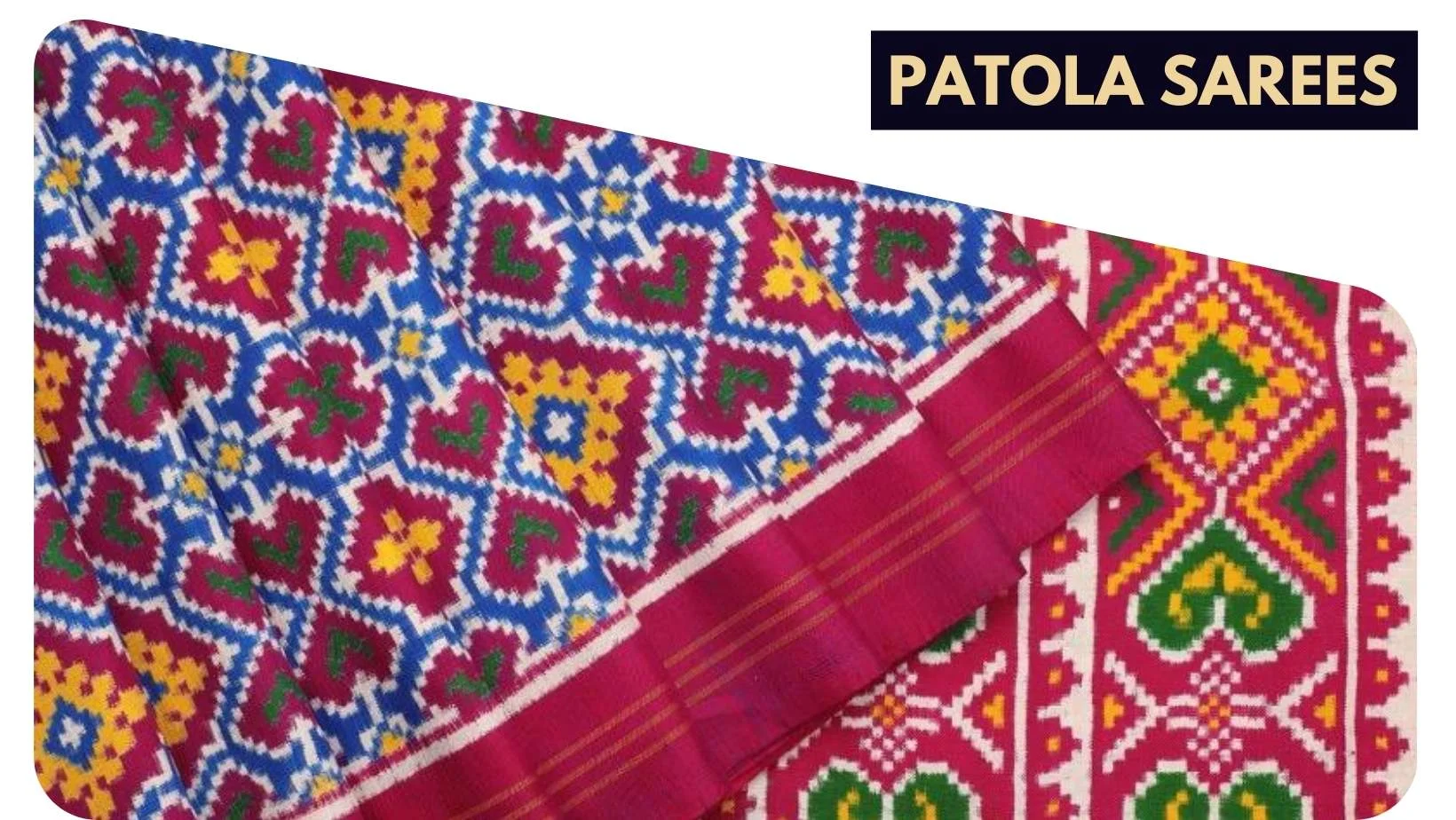
Patola sarees are famous as priceless heirlooms because of the intricacies of making a patola weave. We have witnessed a recent revival of Indian weaves, and Gujarat's Patola weave tops the list. Its painstaking weaving technique makes each authentic Patola invaluable. The name "Patola" is derived from the word "Pattakulla."
Phulkari Saree
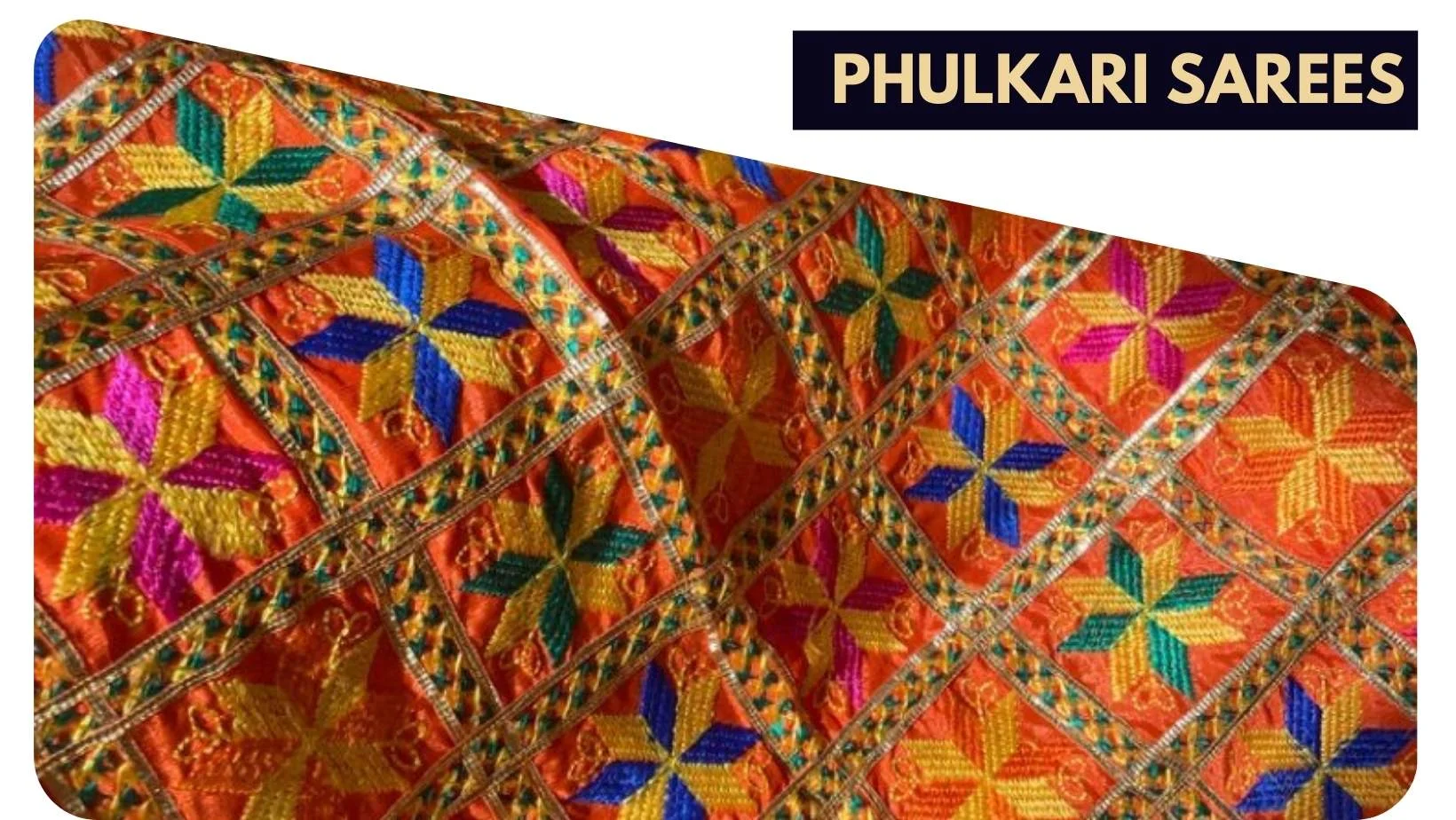
Explore the traditional, colourful, yet geometric embroidery of Phulkari Saree, an epitome of Punjab's rich heritage and artistry. These iconic sarees flaunt beautiful floral embroidery and bold, colourful patterns. These stunners testify to skillful artisans passing on this tradition through generations. Derived from "Phulkari," meaning "flower work," these timeless pieces are crafted precisely using handwoven silk and cotton threads.
Kalamkari Saree
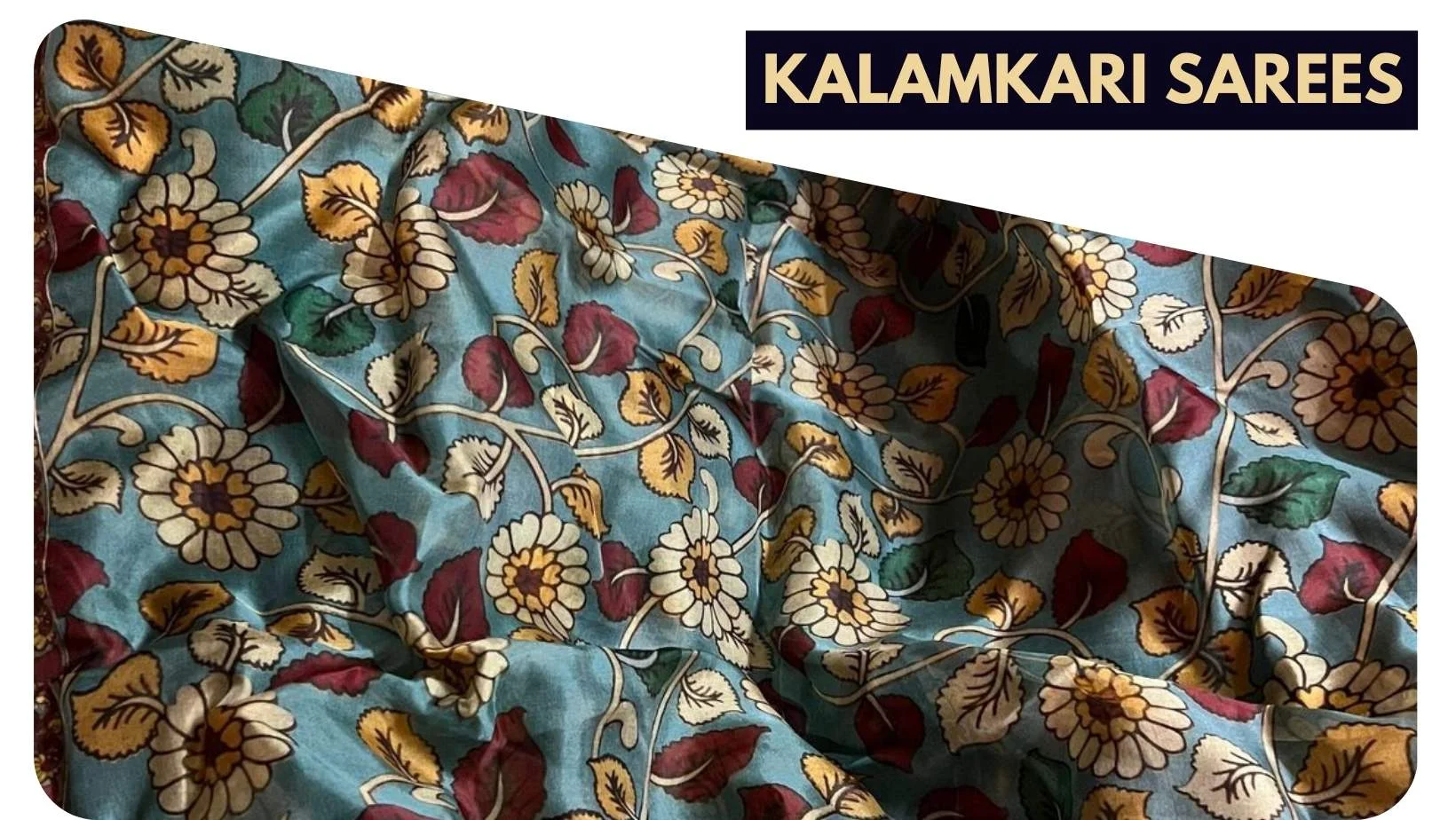
Kalamkari sarees are masterpieces of Indian artistry from Andhra Pradesh to Telangana. These beautiful wardrobe staples are hand-painted or block-printed with natural dyes. The motifs often come with fascinating mythological tales, nature-inspired themes, and iconic geometric patterns reflecting India's rich cultural heritage.
Baluchari Saree
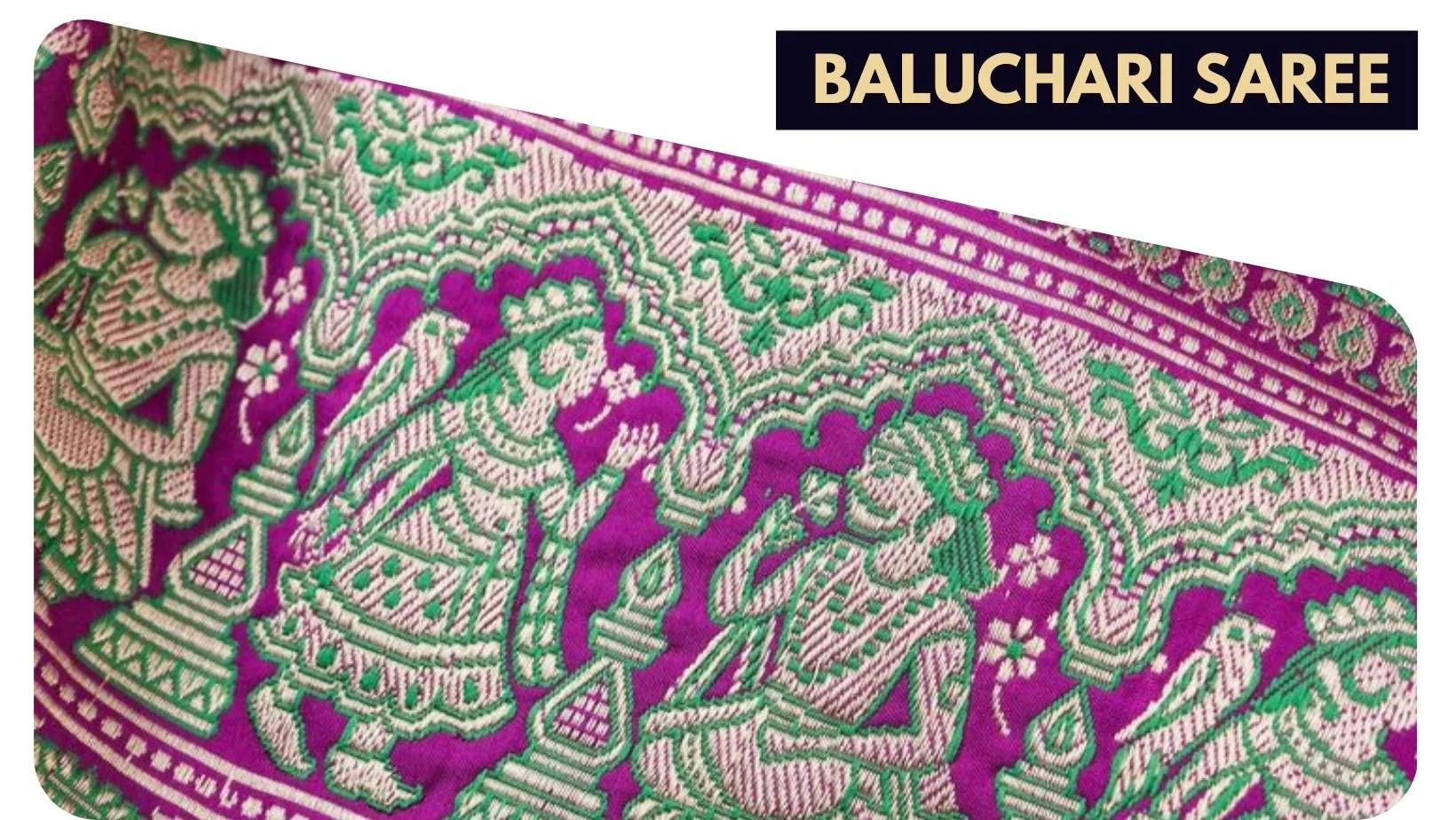
Baluchari is a saree famous for its illustrative themes depicting traditions and social life. These iconic sarees are found in the historic West Bengal, Murshidabad. Handwoven with rich silk, these stunners show intricate artwork. It represents excellent Indian mythology and famous folktales. Baluchari was founded in 1704 CE, when the first Nawab of Bengal, Murshid Quli Khan, changed his capital from Dacca, now Dhaka, to Maksudabad, now Murshidabad. The Nawab's artisans also shifted from Dacca to Baluchar, now Jiaganj village.
Gota Patti Saree
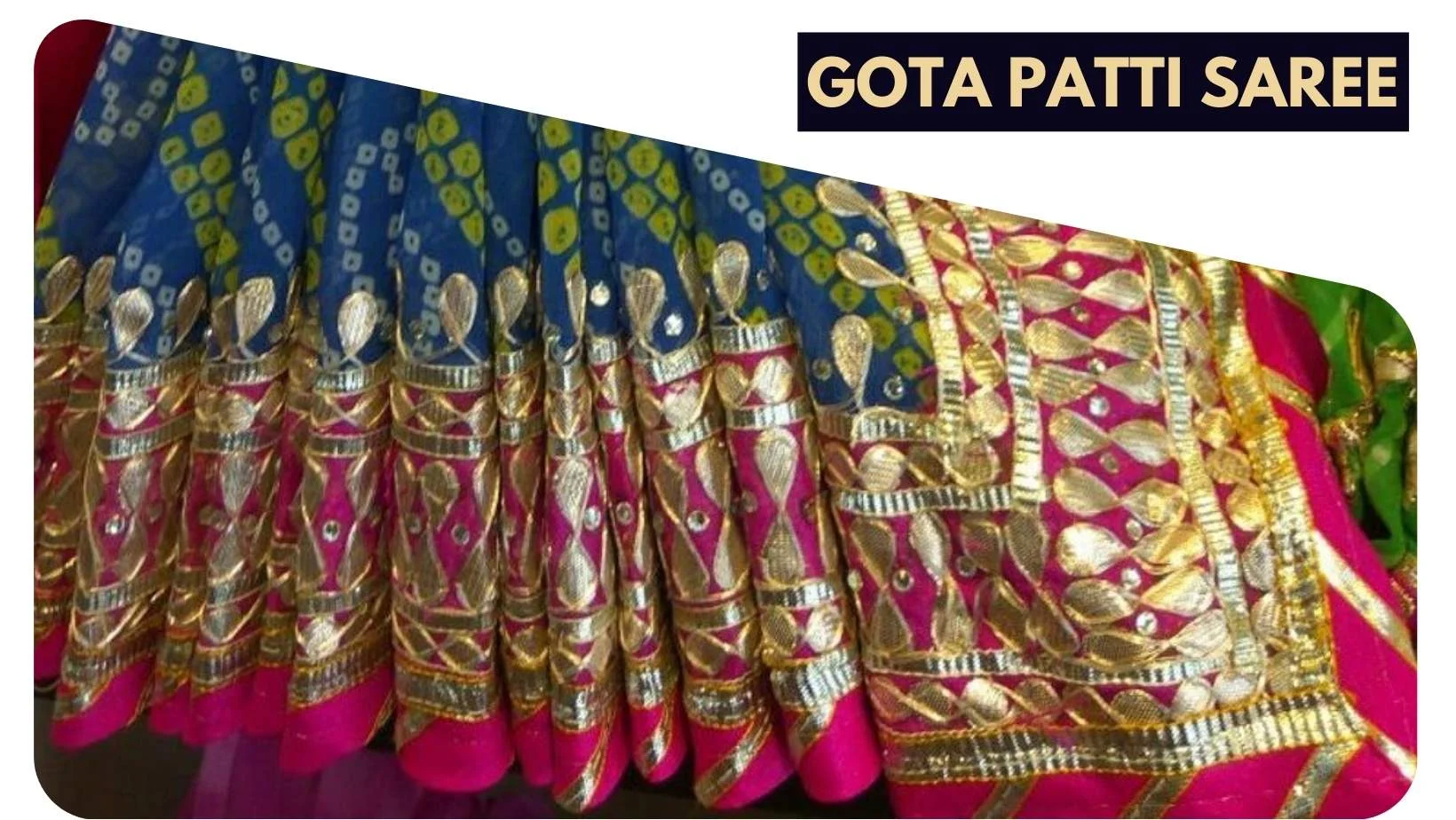
From Gota Patti's rich history to the techniques used to create these stunners, let us dish out all the crucial details of this traditional handcraft. Some argue that Gota Patti is actually a type of Pakistani embroidery that started in Punjab before becoming popular in adjacent states, even though most people think it is only Rajasthan's speciality.
Satin Saree
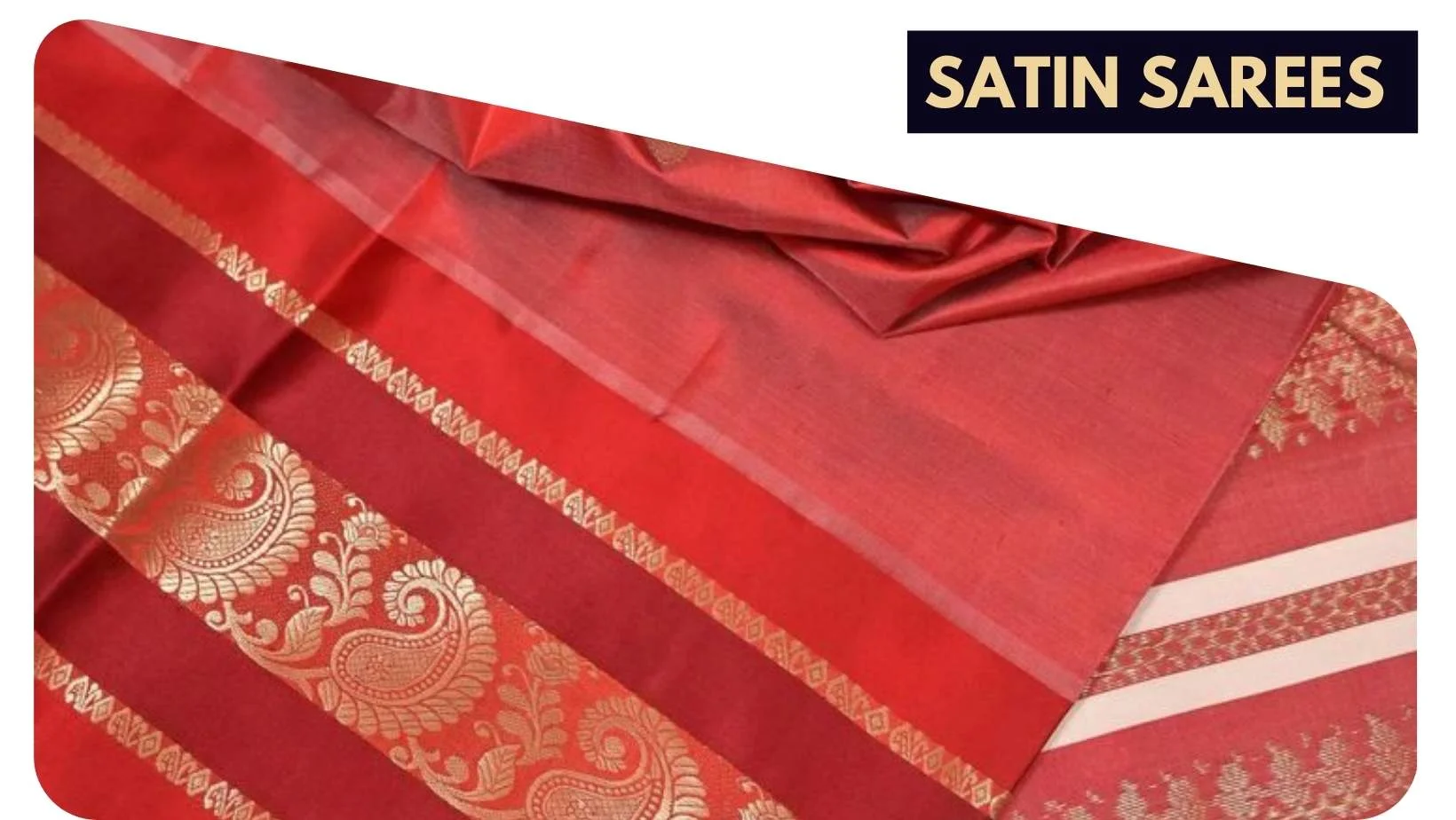
Satin sarees flaunt sophistication and elegance through their glossy finish and fluid drape. It's crafted from silky strands, polyester, or synthetic blends and is an inseparable part of weddings, evening functions, and festive gala programs.
Net Saree
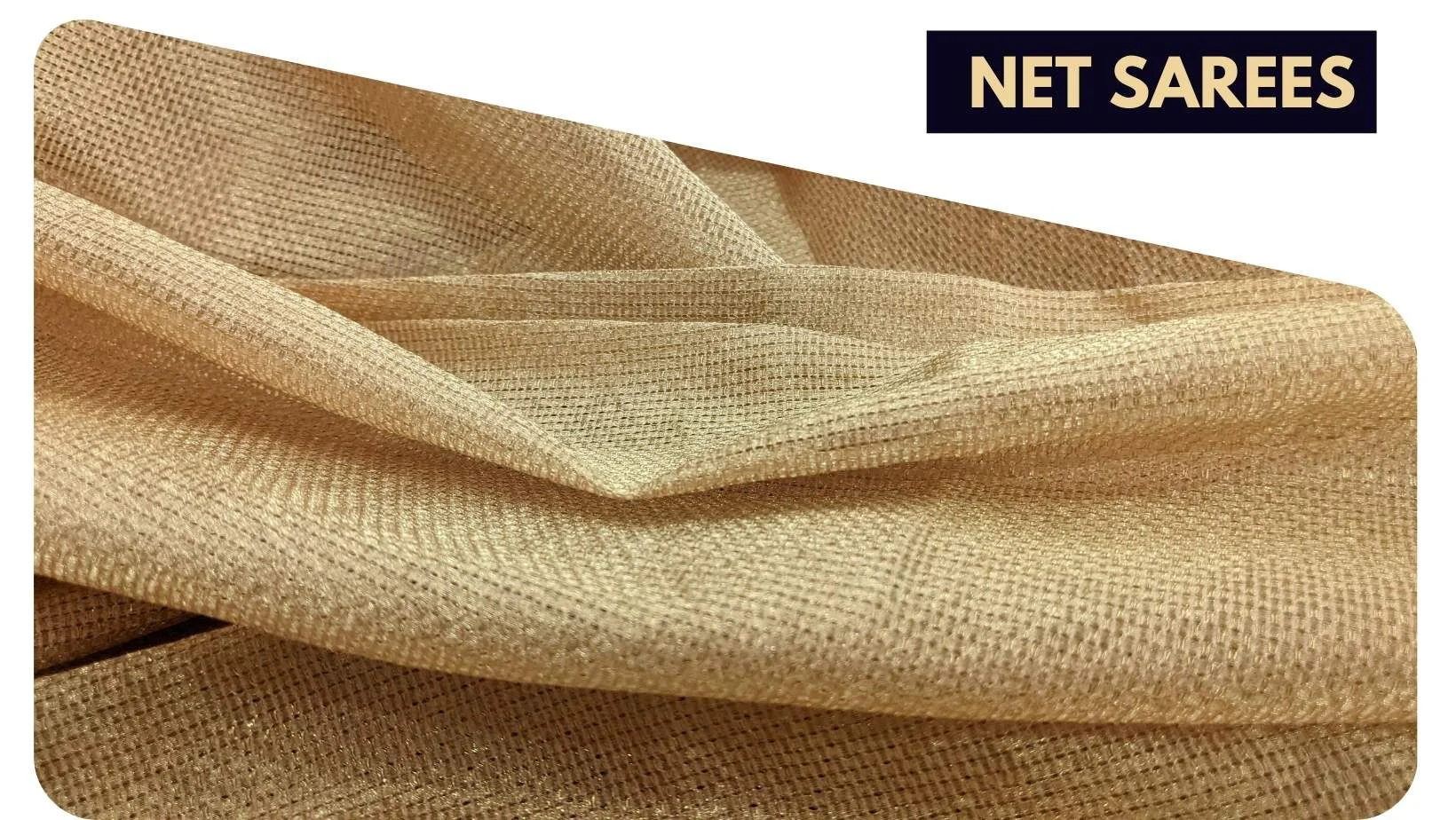
Originating in the Mughal era of India, net sarees flaunt exquisite craftsmanship and gentle fabrics, the grand characteristic of Indian art. Even the art of making net fabric originates in Varanasi, now known as Banaras, the city of textile heritage. Initially crafted by professional artisans using fine silk threads, the net fabric was woven to create lightweight, transparent sarees adorned with embroidery, sequins, and zari work.
Sequins Saree
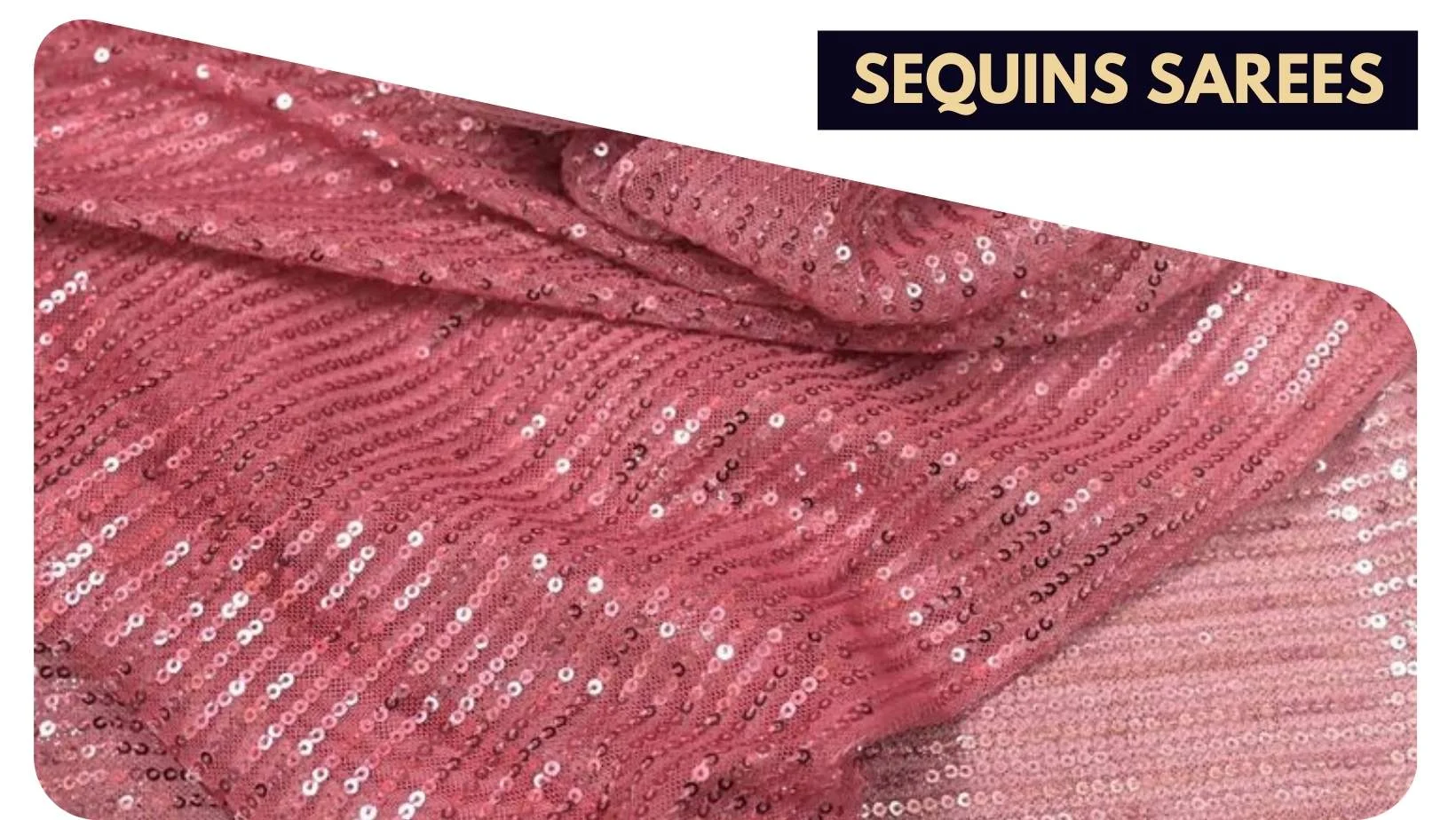
Sequin sarees flourished during the ancient Indus Valley civilisation, which is where intricate artistry first appeared. This gorgeous saree was seen first during the Mughal ages as an element of ornament with gold and silver embroidery threads. Over the ages, this custom persisted, changing in both style and cultural importance.
Zardosi Saree
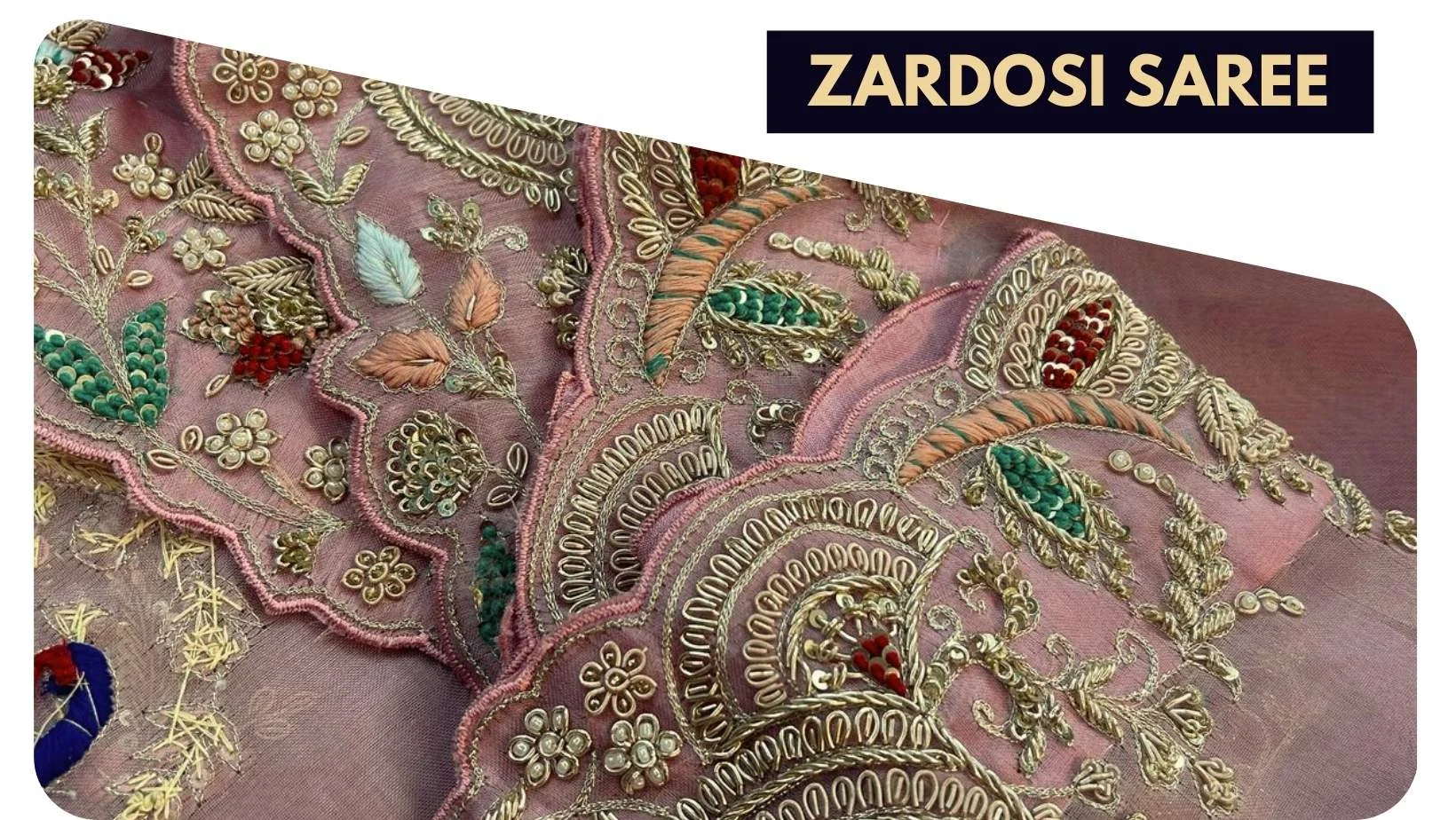
Zardosi saree is one of the most beautiful traditional dresses for women in South Asia; its history dates back more than 5,000 years. Originating in India, these stunners are one of the oldest forms of clothing, as mentioned in the Rigveda. Historically, the saree has been a symbol of grace and cultural heritage worn in many styles according to regional and social customs.
Zari Items (Blouse, Dhoti, Skirt)
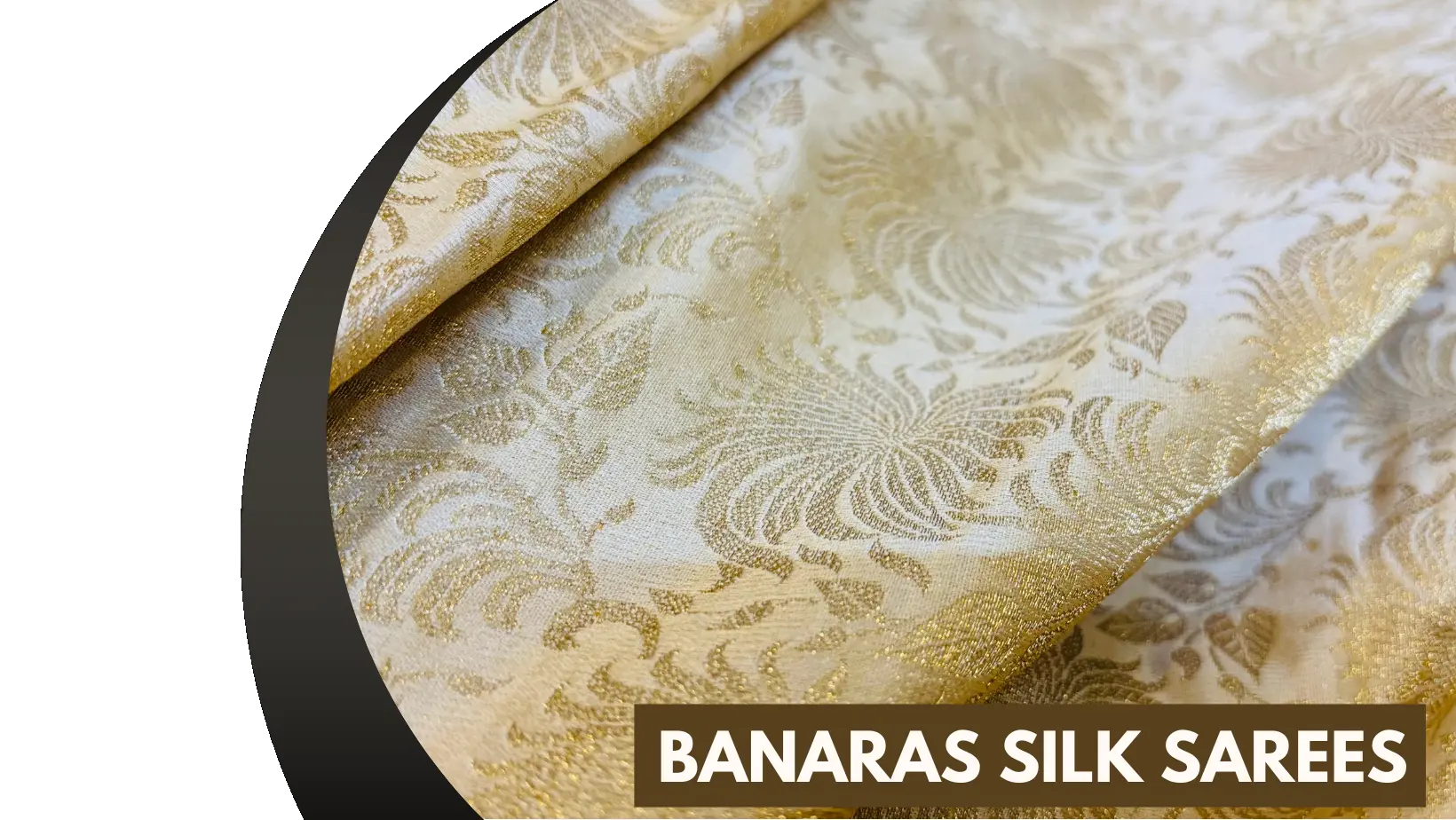
Oldzari is India's best old zari silk buyer, offering top prices for zari blouses, zari dhotis, silk skirts, and zari tissues. Are you looking to sell your old Zari blouse at the best price? Oldzari is here to help.
Why Choose OLDZARI For Selling Old Pattu Silk Sarees?
Quick and Easy Selling Process
Selling your Pure Zari sarees online with OLDZARI is simple. Connect with us, share details about your garment, and let us handle the rest.
Best Prices for Pure Zari Silk Saree’s
Our expert appraisers ensure you get top value for your pre-owned Kanchipuram silk sarees, reflecting the Zari’s quality.
Free Quality Test Report
Every Zari item undergoes a free quality test report, providing comprehensive information about its condition and quality.
Secure Packing with a Free Saree Pouch
We offer a secure packing saree pouch and tamper-proof courier cover at no charge to protect your items during transit.
Accurate Pricing Based on Quality
We utilize information from the quality test report and a detailed assessment of your Saree’s Zari quality to determine a precise selling price.
Trusted Online Platform
We prioritize transparency and customer satisfaction, ensuring a secure and seamless experience for buyers and sellers alike.
Nationwide Service
Whether you’re in Chennai, Bengaluru, Mumbai, or anywhere else in India, we facilitate Zari silk saree buying online with nationwide coverage.
Quick and Reliable Service
We make sure you get paid quickly after we evaluate your sarees, ensuring a smooth and efficient selling experience that values your time.